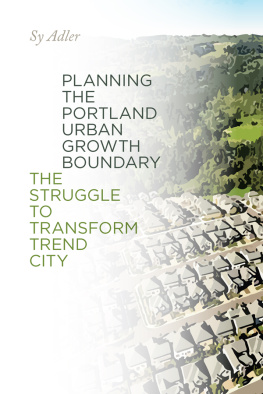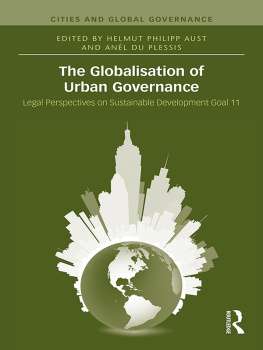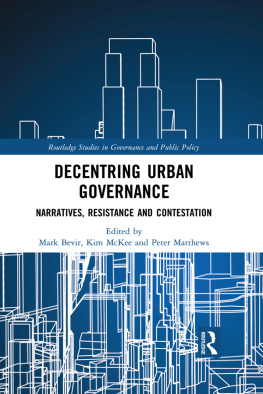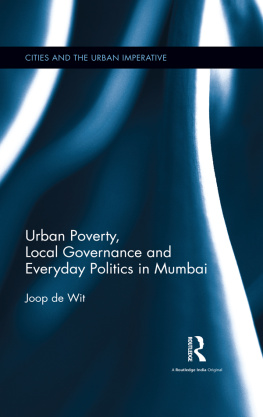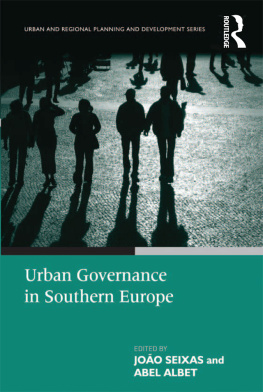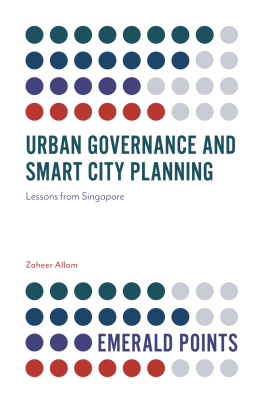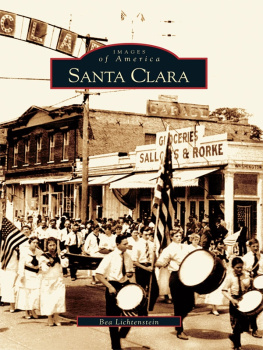
CITY MAKING AND URBAN GOVERNANCE IN THE AMERICAS
Cities in both North and South America are confronting tremendous challenges in urban growth and management as they enter the new century. Curitiba in Brazil and Portland in Oregon US, are cities that have achieved recognition for exemplary urban planning programmes over the past three decades. As such, they provide particularly useful illustrations of the intense development pressures that many urban areas currently face. This book explores the dynamics of their urban governance, arguing that, in general, there has been a unique synergy derived from the combination of visionary leadership, innovative urban plans and effective citizen involvement.
The book argues that, while urban design and architecture are key to the success in making cities livable and in augmenting the global reputations, such sensitive, innovative urban planning and design projects first need to be governed effectively and grounded within the specifics of their local cultures and existing built environments.
First published 2005 by Ashgate Publishing
Published 2016 by Routledge
2 Park Square, Milton Park, Abingdon, Oxon OX14 4RN
711 Third Avenue, New York, NY 10017, USA
Routledge is an imprint of the Taylor & Francis Group, an informa business
Copyright Clara Irazbal 2005
Clara Irazbal has asserted her right under the Copyright, Designs and Patents Act, 1988, to be identified as the author of this work.
All rights reserved. No part of this book may be reprinted or reproduced or utilised in any form or by any electronic, mechanical, or other means, now known or hereafter invented, including photocopying and recording, or in any information storage or retrieval system, without permission in writing from the publishers.
Notice:
Product or corporate names may be trademarks or registered trademarks, and are used only for identification and explanation without intent to infringe.
British Library Cataloguing in Publication Data
Irazbal, Clara
City making and urban governance in the Americas : Curitiba
and Portland. - (Design and the built environment series)
1. City planning - Brazil - Curitiba 2. City planning
Oregon - Portland 3. Curitiba (Brazil) - Politics and
government 4. Portland (Or.) - Politics and government
I. Title
307.12160979549
Library of Congress Cataloging-in-Publication Data
Irazbal, Clara
City making and urban governance in the Americas : Curitiba and Portland / by Clara Irazbal.
p. cm. -- (Design and the built environment)
Includes bibliographical references and index.
ISBN 0-7546-4253-4 (alk. paper)
1. City planning--Brazil--Curitiba. 2. City planning--Oregon--Portland. 3.
Curitiba (Brazil)--Politics and government. 4. Portland (Or.)-Politics and
government. I. Title. II. Series: Design and the built environment series.
HT169.B872C8753 2004
307.1216/0979549--dc22
2004025009
ISBN 13: 978-0-7546-4253-4 (hbk)
CONTENTS
To Gabriel, Miguel, and Ana
Defining a politics that can bridge the multiple heterogeneities, including most emphatically those of geography, without repressing difference is one of the biggest challenges of twenty-first century urbanization.
Harvey, David. (1996) Justice, Nature and the Geography of Difference. Cambridge, Massachusetts. Blackwell: 438.
I am greatly thankful to all the people who contributed to my work or supported me in any way during the process to make it happen, among them: Nezar AlSayyad for his valuable suggestions of relevant literature and his assertive inputs on preliminary drafts; Manuel Castells and Mike Martin for their encouragement and comments; Allan Jacobs for his suggestion to work on Curitiba and his useful research tips; Rula Sadik for valuable comments on preliminary drafts of my research proposal; Ananya Roy for providing inspiration and for her support and fine insights in the preparation of ; Rosa Moura, Fernanda Snchez, and Wolf-Dietrich Sahr for their critical observations on the chapters on Curitiba; Marta Snchez, Ines, and Eliane for becoming my family in Curitiba; Blair, Evan Manvel and other friends and staff at 1000 Friends of Oregon in Portland for their generous support in many ways; Randy Gragg for sharing his work as architectural critic of The Oregonian; all the people interviewed in Curitiba and Portland, for their generosity sharing their time, knowledge, and opinions; and my late friend Tamra Suslow, who read and edited bits and pieces of this work, and inspired me to finish it for both of us.
I am also thankful to Tridib Banerjee and Dowell Myers for providing friendship and mentoring during my first two years as assistant professor at the University of Southern California, and to my graduate research assistants, in particular to Ferdinand Lewis, Katherine Peterson, Dawn Finley, Michael Vanderbeek, and Soyeon Choi for helping me in various capacities to edit the work and provide teaching and research support throughout the process.
I specially acknowledge my parents, who provided me emotional and economic support during the research process; my husband, for all his loving support and endurance throughout the process; and my childrenwhom not always understood what I was doing and whybut nevertheless trusted me and granted me the time to finish it.
This research was partially funded by student grants, fellowships and loans: a Power Grant, Center for Latin American Studies, University of California at Berkeley, 1997; Block Grants, College of Environmental Design, University of California at Berkeley, 1996-2001; Fellowships, Services for International Students and Scholars, 1999-2001; a Humanities and Social Sciences Grant, University of California at Berkeley, 1998; and a CONICIT Loan, Council for Scientific and Technological Research of Venezuela, 1998.
Introduction
Local Spatiality in a Global World
As debate rages across the Americas about how to promote urban livability, sustainability, and smart growth, the time is ripe to examine concomitant issues of urban governance. Questions of urban governancee.g., who should make the central decisions about the future of cities, who should be responsible for the quality of urban environments and the achievement of socio-spatial equality, and howhave moved to the top of political agendas at all levels of government, and have driven significant scholarly research. In response to these developments, this book presents research on urban governance in two cities of the Americas, examining the impact of various aspects of urban planning programs and urban transformation processes, from evaluations of participative processes to assessment of spatial interventions.
The notion of governanceunderstood as the relationship between civil society and the state, rulers and the ruled, the government and the governed (McCarney et al., 1995: 95-6)is a highly effective analytical tool for studying the levels of citizen involvement and participation in the management of urban growth and the definition of the physical structure of cities. This research has focused on Curitiba (Paran, Brazil) and Portland (Oregon, USA), cities that have achieved general recognition as exemplary urban planning experiences, in order to explore governance dynamics and to understand how certain urban governance and planning regimes trace their development paths in the attempts to enhance their levels of urban livability and democracy. Although some aspects of these cities have been extensively documented, their experiences have yet to be critically and comparatively assessed. Thus, the studies of Curitiba and Portland are engaged here both as single and comparative case studies. Curitiba and Portland are also analyzed both as the central municipalities of larger city regions, and as metropolises each formed by a group of more than 20 municipalities. The book examines the relationship between leadership and citizen involvement and its impact on the architectural, urban design, and urban planning processes, as well as the actual physical transformation in these cities since the mid 1960s. It also contextualizes particular urban design and architectural projects in these two cities in larger theoretical debates of culture, urbanism, and globalization.



